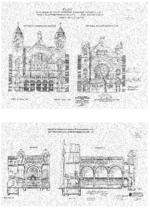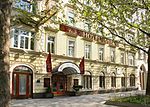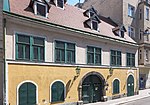Türkischer Tempel
Austrian building and structure stubsEuropean synagogue stubsFormer synagogues in AustriaIslamic architectureSephardi Jewish culture in Austria ... and 5 more
Sephardi synagoguesSynagogues destroyed during Kristallnacht (Austria)Synagogues in ViennaTurkish-Jewish diasporaTurkish diaspora in Europe

The Türkischer Tempel (English: Turkish Temple) was a synagogue in Vienna. It was built specifically for a community of Sephardi Jews, who originally came from Turkey. The synagogue was built in a Turkish, almost Islamic style, with a dome. The building was destroyed during the Reichskristallnacht in 1938.
Excerpt from the Wikipedia article Türkischer Tempel (License: CC BY-SA 3.0, Authors, Images).Türkischer Tempel
Zirkusgasse, Vienna KG Leopoldstadt (Leopoldstadt)
Geographical coordinates (GPS) Address Nearby Places Show on map
Geographical coordinates (GPS)
| Latitude | Longitude |
|---|---|
| N 48.215833333333 ° | E 16.383888888889 ° |
Address
Zirkusgasse 24
1020 Vienna, KG Leopoldstadt (Leopoldstadt)
Austria
Open on Google Maps











